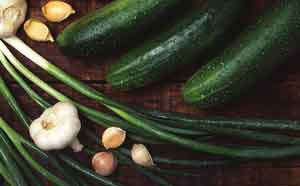 Do you suffer from food cravings? Does sugar make you feel real good? People with coronary heart disease, diabetes, kidney disease and age-related macular degeneration have got to get their blood sugar under control to stop incessant cravings. Cravings are come-downs after blood sugar overdose. Long term Hyperglycemia causes many long-term health problems including heart disease, eye, kidney and nerve damage. Many of the things you were taught were healthy -- orange juice, wheat toast, corn flakes, carrots -- are actually to be avoided. They cause blood sugar surges.
Do you suffer from food cravings? Does sugar make you feel real good? People with coronary heart disease, diabetes, kidney disease and age-related macular degeneration have got to get their blood sugar under control to stop incessant cravings. Cravings are come-downs after blood sugar overdose. Long term Hyperglycemia causes many long-term health problems including heart disease, eye, kidney and nerve damage. Many of the things you were taught were healthy -- orange juice, wheat toast, corn flakes, carrots -- are actually to be avoided. They cause blood sugar surges.
 Blood Sugar
Blood Sugar
The glycemic index (GI) provides a measure of how quickly blood sugar levels rise after eating a particular type of food. Different foods have considerably different effects on blood sugar levels. The glycemic index is measured relative to consumption of pure glucose. On the glycemic index scale, each food is assigned an index number from 1 to 100. Glucose has a glycemic index of 100. Low-GI food release glucose more slowly and steadily,  which leads to much better after-meal blood levels.
which leads to much better after-meal blood levels.
Best of All: Very Low GI(under 20)
Asparagus, bean sprouts, beet greens, broccoli, butter, cabbage, cauliflower, celery, cheese, chick peas, cucumber, eggs, fish, kale, lettuce, meat, milk, mushrooms, mustard greens, olives, peanuts, peppers, radishes, spinach, swiss chard, turnips, watercress, raspberries, strawberries, pecans, coffe and tea without cream or sugar.
OK: Low GI(under 55)
Fructose, Beans (white, black, pink, kidney, lentil, navy, soy); almonds, walnut, small seeds; most Vegetables, most sweet Fruits: peaches, mangos, squash; whole Grains (millet, oat, rye, rice, barley); bran cereals.
Minimize: Medium GI (55-70)
Sugar, fruit juice, ice cream, whole wheat, pita bread, brown rice, potato, raisins, prunes, banana, corn, parsnips, carrot, sweet potato, yam.
Avoid: High GI (over 70)
Glucose, white bread, spaghetti, white rice, cornflakes, breakfast cereals, pretzels, baked potato.
A high-GI food causes a very rapid rise in blood glucose levels and is only suitable for energy recovery after vigorous exercise.
Satisfaction
Glycemic index (GI) diet plans are based on the concept that low-glycemic foods are more satisfying than high-glycemic foods. Low-GI foods take longer to absorb and help dieters feel full longer, so they are less likely to overeat. By contrast high-GI foods break down faster, leaving you hungry and less satisfied. Foods with lower GI scores reduce hunger in obese children. Critics of the USDA's MyPlate say that in school meals potatoes should be replaced with low GI vegatables like broccoli and cabbage.










